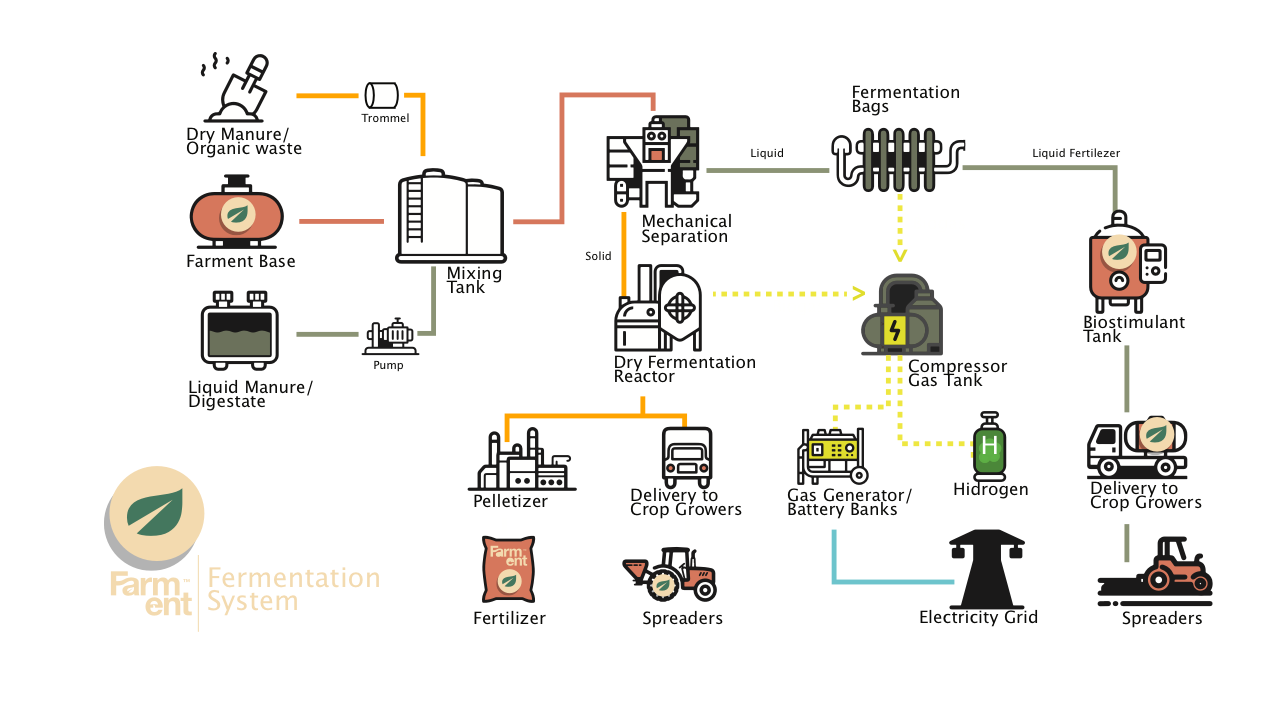Mining Manure
The Farment™️ improves Biogas production and contributes
to reducing greenhouse gas emissions.
improving biogas production process
Fermentation system proposed by Farment™. It includes information on biogas, anaerobic digestion, and components of the current system.

Biogas fermentation is a series of biological processes in which microorganisms break down biodegradable material in the absence of oxygen.
What is Biogas?
- Is a mixture of methane, CO2, and small quantities of other gases.
- It is produced by the anaerobic digestion of organic matter in an oxygen-free environment.
- Is considered an eco-friendly fuel because it can help to reduce greenhouse gas emissions and the world’s dependency on fossil fuels.
- With minor cleanup, biogas can be used to generate electricity and heat.
What is liquid anaerobic digestion?
- Anaerobic digestion is a process through which bacteria break down organic matter in the absence of oxygen.
- Organic matter such as animal manure, wastewater biosolids, and food wastes.
- Wet anaerobic digestion systems are designed to process biodegradable feedstock into a digestate slurry that typically has less than 15% total solids.
- For feedstock with a higher percentage of total solids, the mix is diluted with fresh water, re-circulated processed water, or another form of organic waste with a lower percentage of total solids.
- This could include co-digestion, which is covered on the next slide.
What is biogas fermentation?
- Biogas fermentation is a series of biological processes in which microorganisms break down biodegradable material in the absence of oxygen.
- Biogas consists mainly of menthane (CH4) and carbon dioxide (Co2).
- Advantages of biogas:
- 100% renewable (no new carbon)
- Transportable
- Storable
- Permanently available
